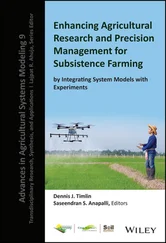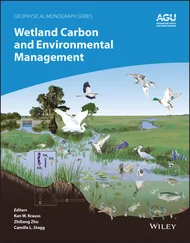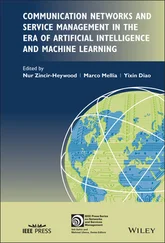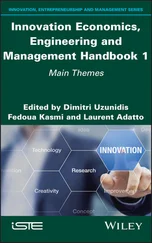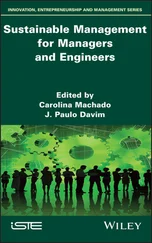Pollutants and Water Management
Здесь есть возможность читать онлайн «Pollutants and Water Management» — ознакомительный отрывок электронной книги совершенно бесплатно, а после прочтения отрывка купить полную версию. В некоторых случаях можно слушать аудио, скачать через торрент в формате fb2 и присутствует краткое содержание. Жанр: unrecognised, на английском языке. Описание произведения, (предисловие) а так же отзывы посетителей доступны на портале библиотеки ЛибКат.
- Название:Pollutants and Water Management
- Автор:
- Жанр:
- Год:неизвестен
- ISBN:нет данных
- Рейтинг книги:3 / 5. Голосов: 1
-
Избранное:Добавить в избранное
- Отзывы:
-
Ваша оценка:
- 60
- 1
- 2
- 3
- 4
- 5
Pollutants and Water Management: краткое содержание, описание и аннотация
Предлагаем к чтению аннотацию, описание, краткое содержание или предисловие (зависит от того, что написал сам автор книги «Pollutants and Water Management»). Если вы не нашли необходимую информацию о книге — напишите в комментариях, мы постараемся отыскать её.
WATER MANAGEMENT Pollutants and Water Management: Resources, Strategies and Scarcity
Pollutants and Water Management
Pollutants and Water Management: Resources, Strategies and Scarcity
Pollutants and Water Management — читать онлайн ознакомительный отрывок
Ниже представлен текст книги, разбитый по страницам. Система сохранения места последней прочитанной страницы, позволяет с удобством читать онлайн бесплатно книгу «Pollutants and Water Management», без необходимости каждый раз заново искать на чём Вы остановились. Поставьте закладку, и сможете в любой момент перейти на страницу, на которой закончили чтение.
Интервал:
Закладка:
Flood management: The large variability of rainfall in space and time in India causes flooding in different parts of the country. Indian rivers carry more than 70% of their annual flow in four months during the monsoon period. There is an essential need to conserve flood water and flows for the growing demands of water in the country. Flood management can also play a key role in groundwater recharge and drought management. Nearly 500 BCM of water has been estimated through flood flows in Indian rivers (Jain 2019). In the current scenario, the management of storage flood water is not sufficient. The management of storage flood water can be used to meet growing demands throughout the year. It will also help in water‐related disasters like floods and droughts. Table 1.5International reports on current and future demands of water of India.Source: IDSA (2010).World Bank Report 1999YearExpected demandYearPer capita water availability1997552 BCM19475000 m3 per year20251050 BCM19972000 m3 per year20251500 m3 per yearThe Mckinsey Report 20092009740 billion m320301.5 trillion m3
Water transfer between water enriched and water‐stressed regions: India has large temporal and geographical variability about water availability. The transfer of water between water surplus regions to deficit regions could be a very effective approach in meeting the demand of the entire country.
Recycle and reuse: In the current scenario, less of the urban water supply is recycled and reused, and a large quantity of water is wasted. Around 40% of the water in some cities in India is wasted due to leakage or theft. For instance, the Arab states treat 55% of wastewater, and 15% is reused, which is used in farm irrigation, environmental protection, and industrial cooling (Jain 2019).
Impact of climate change: Warming of the lower atmosphere affects rainfall, snowfall, and glaciers, and raises sea levels, which all interfere with the quantity of water resources. Rising sea levels increase flooding in coastal areas and the intrusion of seawater alters water quality in rivers, lakes, and groundwater.
Maintain water quality of resources and provide safe drinking water for rural areas.
Hydro‐diplomacy with neighboring countries to solve water conflicts.
1.7.4 Health Prospective
The prevention and control of water‐ and vector‐borne diseases can be a difficult task due to the association with poor water quality and warming of the climate. Apart from that, the presence of arsenic, uranium, lead, cadmium, etc. leads to an increase in health problems due to their probable correlation with cancer and cardiovascular, neurological, and skin diseases.
Projected water demand is continuously increasing day by day due to the rising demand for water by agriculture, industry, and households, as well as the growing population. Groundwater resources are under tremendous pressure and the water table in India is depleting at the rate of 0.4–0.6 m per year. India is not using the full potential of river water, precipitation, and floodwater.
1.8 Government Initiatives to Ensure Water Security
Recently, the Indian government formed the Ministry of Jal Shakti in May 2019 by merging two ministries: the Ministry of Water Resources, River Development, and Ganga Rejuvenation and the Ministry of Drinking Water and Sanitation. The Government of India had also established the National Water Mission, which is one of the eight National Missions under the National Action Plan on Climate Change 2008. Now, National Water Mission is operating under the Ministry of Jal Shakti and the main objective is “conservation of water, minimizing wastage and ensuring its more equitable distribution both across and within States through integrated water resources development and management.” The National Water Mission is working towards five goals as follows:
1 Building a comprehensive water database in the public domain and an assessment of the impact of climate change on water resources
2 Promotion of citizen and state actions for water conservation, augmentation, and preservation
3 Focused attention to vulnerable areas including overexploited areas
4 Increasing water use efficiency by 20%
5 Promotion of basin level integrated water resource management
In the 12th five‐year plan (2012–2017) of India, more emphasis has been given on aquifer mapping, watershed development, and the involvement of nongovernmental organizations (NGOs) in developing irrigation capacity. Previously, the National Democratic Alliance (NDA) government established a separate ministry on “River Development and Ganga Rejuvenation” to accelerate the development of rivers and approved a 20 000 crores budget to the Namami Ganges scheme for the historical river Ganga. Further, the NDA government made it mandatory that 50% of work under the Mahatma Gandhi National Rural Employment Guarantee Act (MGNREGA) 2005 should be for the improvement of water conservation work like the construction of check dams and de‐silting of water bodies. Recently, in the union budget 2016–2017, 60 000 crore rupees for a groundwater recharge project, 259.6 crore rupees for river basin management, and 660.27 crore rupees for water resources management were allocated and particular emphasis was given to the National Rural Drinking Water Program. Several water‐related projects such as rainwater harvesting, artificial groundwater recharge, watershed management, etc. are already being run by central and state governments. Further, a substantial amount has been allocated for groundwater recharge projects in drought‐hit areas to combat the challenges of climate change. The national adaptation fund was established to analyze climate change threats. The government also paid specific attention to arsenic‐affected areas and constructed specially designed new wells for the mitigation of arsenic pollution in groundwater.
The Indian government formed the Ministry of Jal Shakti in May 2019 as the main regulating body of water resources in the country. For improved water quality and quantity of water resources, the Indian government launched several schemes, namely, Namami Ganges, the National Rural Drinking Water Program, the national adaptation fund (for climate change threats), the National Water Mission, etc.
1.9 Managing Water Resources Under Climate Change
India has the potential to transform the increasing number of challenges in water security into opportunities. Based on the available potential of the water sector, it can be concluded that India is not a water‐deficit country. In India, 90% of water resources are suitable for growing crops. Some of the reasons against water security in the Indian context are water resource mismanagement, inadequate use of water potential, lack of required government attention, and lack of the willingness to adopt the latest technologies. Hence, fulfilling these lacunae can combat current and future water security problems. India has the opportunity to establish, as a nation, water security for a vast population. Some of the efforts required are as follows:
Government priories: The success of any project or mission is largely dependent on government policies and attention. Hence, water security should be the primary agenda of the government.
Strict actions as well as rules and regulations: Stringent regulation is needed and strict action should be taken against those causing water pollution and wastage.
Potential to use surface water: The surface water used is 690 BCM (55.6%) out of a potential of 1869 BCM (Central Water Commission 2014). The use of the rest of the water is restricted due to a high level of pollution. The Ganges‐Brahmaputra‐Meghna (GBM) and Indus river systems have an average annual potential of water of 1110.62 BCM and 207.7 BCM, respectively (Central Water Commission: Indus Water Commission). These two river systems have two‐thirds of the water potential of India. The need of the hour is to use the potential of surface water.
Читать дальшеИнтервал:
Закладка:
Похожие книги на «Pollutants and Water Management»
Представляем Вашему вниманию похожие книги на «Pollutants and Water Management» списком для выбора. Мы отобрали схожую по названию и смыслу литературу в надежде предоставить читателям больше вариантов отыскать новые, интересные, ещё непрочитанные произведения.
Обсуждение, отзывы о книге «Pollutants and Water Management» и просто собственные мнения читателей. Оставьте ваши комментарии, напишите, что Вы думаете о произведении, его смысле или главных героях. Укажите что конкретно понравилось, а что нет, и почему Вы так считаете.



